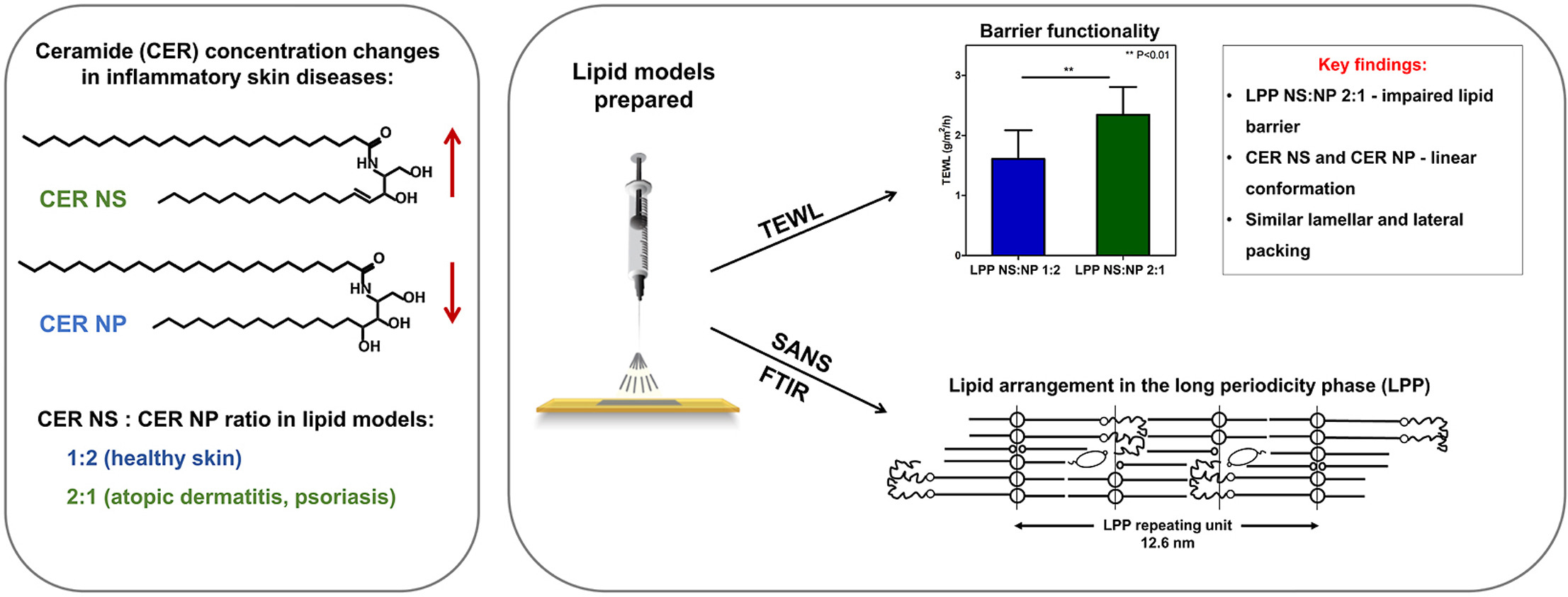One-third of the world’s population suffers with a condition affecting the largest organ of the human body; the skin. Inflammatory skin diseases are a common group of skin conditions that includes atopic dermatitis (eczema) and acne vulgaris (acne). These diseases are caused by a strong immune response and often results in the skin barrier being impaired. The skin barrier is found in the epidermis, which is the exposed layer of skin that sits on top of the dermis and subcutaneous layer. Lipids have a key role in the skin barrier, assisting the skin to prevent extreme water loss, as well as the entry of pathogens and chemical into the body. Notably, these lipids are found in the 20 cells thick stratum corneum, which is the surface layer of the epidermis.

Journal of Lipid Research, graphical abstract of the paper.
When inflammatory skin disease occurs, the lipid structure of the stratum corneum is modified and the skin barrier becomes less effective. In healthy skin, the lipid matrix contains a long-periodicity phase with three types of lipids called ceramides (CER), free fatty acids and cholesterol in a ratio of 1:1:1. This phase is unique to the lipids found in the skin.
In humans, there are 20 types of CER and the altered ratio between CER is characteristic of inflammatory skin diseases. Two common types of CER are CER N-(tetracosanoyl)-sphingosine (CER NS) and CER N-(tetracosanoyl)-phytosphingosine (CER NP). In this investigation, the ratio between these CER were increased (2:1 respectively) compared to healthy skin ratios (1:2 respectively) to replicate the CER changes observed in inflammatory skin diseases.
ly on LARMOR, the team had discovered that changing the lipid headgroups affects the lipid matrix in the skin. This time, they used LARMOR to find out the effects of altering the CER head groups on lipid organisation and water loss.
This experiment showed that an increased CER NS: CER NP did not have an effect on the long-periodicity phase in relation to lipid arrangement and organisation. This means the long periodicity phase is insensitive toward CER concentrations and thus is not the main factor in inflammatory skin diseases to alter the stratum corneum lipid organization.
However, the increased ratio of lipids did result in a greater water loss from the epidermis, which proves that lipids concentrations play a significant role in controlling the water in the stratum corneum. Therefore, this is still a factor for the symptoms of inflammatory skin diseases. It is possible that denser hydrogen bonding network in the 1:2 ratio plays a role. This will be the subject of future studies.
This research has improved the understanding of our skin barrier structure and function and how this correlates to differences between healthy and inflamed skin. Now the team is studying whether the addition of CER subclasses will change the long periodicity phase.
To read this study please click the link below:
